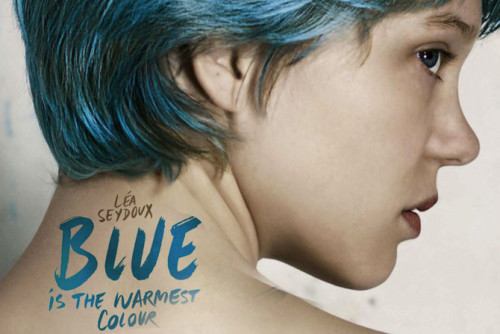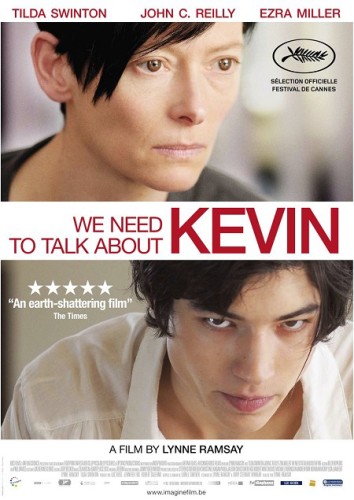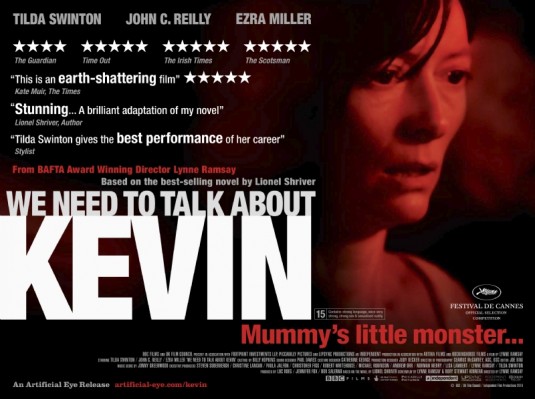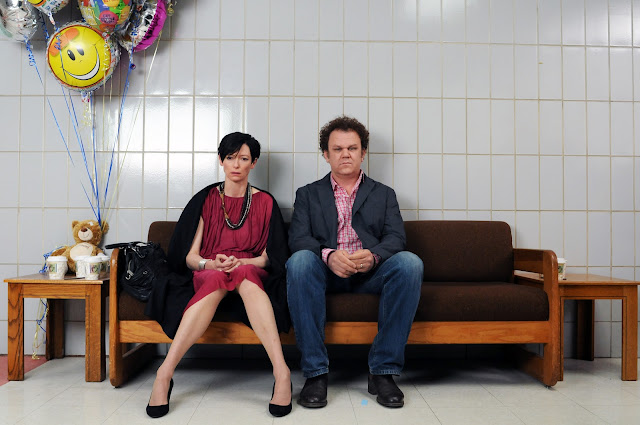The poster for Lynne Ramsay’s 2002 film, Morvern Callar
This post by Sarah Smyth appears as part of our theme week on Violent Women.
What would you do if you found your boyfriend dead on the kitchen floor after committing suicide? Panic? Cry? Call the authorities? This is not the case in British director Lynne Ramsay’s delicious 2002 film, Morvern Callar. The film opens with the titular character, Morvern (Samantha Morton) lying on the floor by her dead boyfriend as the lights on the Christmas tree flash in the background. The scene is silent and utterly absurd. Morvern sits quietly, perhaps contemplating what has happened, although the film never quite reveals what she’s thinking. She then touches and caresses the body in a way which is both sensual and erotic. The scene is visceral and private; it’s almost tender. Yet, underneath it’s silent and passive exterior, there’s a subtle kind of violence, a violence in not doing anything through Morvern’s refusal to act in a “moral,” “normal,” and “citizenly” way. This violence quietly yet insidiously perforates the scene. Morvern eventually gets up and looks at the computer where, on the screen, bears the instructions “read me.” This is her boyfriend’s last command but one to which Morvern gainfully obeys. From here on out, Morvern resolutely and, I argue, violently stakes out her place and takes control over her own trajectory by, ironically, reinterpreting the very instructions which her boyfriend left on the computer.
The violence in the opening scene is of Morvern not acting following her boyfriend’s death
Morvern Callar is based on Alan Warner’s 1995 novel of the same name. It centres on Morvern, a young supermarket assistant, who lives in a cold and bleak Scotland. Her boyfriend commits suicide on Christmas day, leaving behind presents for Morvern including a cassette player, mix tape, and a manuscript of his novel with instructions for Morvern to get it published. The instructions read, “I wrote this for you. I love you,” and Morvern takes this quite literally. She deletes his name from the title page and inserts hers instead. After sending the manuscript to a publisher, she then escapes on a hedonistic holiday to Spain with her best friend and colleague, Lanna (Kathleen McDermott), where they spend their time clubbing, taking drugs and having sex. When she’s there, a couple of publishers seek Morvern out and offer her a lucrative book deal, which Morvern gladly accepts. When she returns to Scotland, she plans to use the advance from her deal to leave home and, perhaps, start a better life. She extends this offer to Lanna who declines, and the film ends on an ambiguous but hopeful note as Morvern sits at the station waiting to begin her new life.
Morvern Callar is not obviously nor overtly a violent film. The opening scene – quiet, muted, subtle – informs the tone and even the theme of the rest of the film. Yet, Morvern’s act of deleting her boyfriend’s name – James Gillespie in the film, unnamed in the book – from his manuscript is a violently feminist act. Since the beginning of literature itself, male authors have continually appropriated the voice, narratives and identities of women Perhaps with the flexibility creative licence, this in itself shouldn’t be problematic. After all, women have also appropriated the voice, narratives and identities of men in their work. Rather, the problem arises with the profusion by which this occurs, the privileging of the male-authored narrative within the canon, and the consideration of these narratives as universal rather than explicitly gendered. Morvern’s act, then, is a protest against this and reclamation, perhaps even reparation, for the years of oppression enacted on female voices within literature.
The realisation of this reparation is significant. Morvern gets paid an extraordinarily large sum, £100,000 (about $270,000 today) to be exact, from the publishers for her book deal. Given her background and socio-economic status, this sum is doubly significant. In fact, its life changing, enabling her to reclaim an authority and autonomy over her life not (literally) afforded to her before. When Morvern asks Lanna to go with her on this new adventure, she tells her not to worry about money; Morvern can take care of it. This offer positions Morvern in a traditional heteronormative male role as she proposes a promise of financial security to the woman. Of course, this involves a level of female dependence of male power, here economic, inducing a loss of female independence and freedom so crucial to the subject of modern feminism. Lanna declines, perhaps for this reason or perhaps because she’s too tied to home. But ultimately, this is journey for Morvern to take, for Morvern to reclaim, and the film leaves us hopeful that it will be successful.
Lanna chooses not to leave with Morvern despite the tempting financial offer…
In order for Morvern to follow through effectively on this violent act, however, this violence must be literalized on her boyfriend’s body. If she informed the authorities of his death, Morvern would also risk sacrificing his financial and intellectual property. She, therefore, leaves his body on the kitchen floor for a while before eventually cutting it up in the bath and burying it in the forest. The film makes no attempt to suggest any moral quandary on that part of Morvern. As Williams says, “Morvern never reports the death, and deals with the body herself. She mourns Him but shows no remorse, no guilt for -as it were- dancing on His grave. If she gets away with it, it’s partly because she doesn’t lie: Morvern is guileless as well as guiltless.” The scene in which Morvern cuts up the body is, in fact, blackly comic as the blood splatters on Morvern’s body accompanied by the Velvet Underground’s “I’m Sticking with You.” Although we get no point-of-view shot – the body is, in fact, never seen – we are privy to Morvern’s subjectivity and interiority through the music which Morvern is listening to on her cassette player. Our sympathies, then, are directed towards Morvern, not her boyfriend. This violence, then, is both an extension and a literalization of the violence enacted on the (male) authorial authority, and, crucially, I argue, an explicit feminist statement.
Morvern’s authorial violence is literalized on the boyfriend’s body in a darkly comical way
The violence enacted on the authorial authority within the film is also mirrored outside of the film. The novel is written by a man but is narrated by a woman. The film is adapted and directed by a woman, reclaiming the female narrative voice through this female vision. As Shelley Cobb argues in Adaptation, Authorship and Contemporary Women Filmmakers, Ramsay inverts the gendered appropriation by excluding Warner’s narrative voice, reflecting Morvern’s usurpation of the ideal figure of the male author. If as Linda Ruth Williams claims, Morvern “purloin[s] a man’s cultural capital,” Ramsay also purloins the symbolic, cultural and economic capital of (male) authorship. This purloining of capital and the subsequent signature of Ramsay’s (female) authorial authority within the film is most obviously found in the changes Ramsay makes when adapting the novel for the screen. How significant it is, then, that Ramsay changes the ending from the novel where Morvern discovers she’s pregnant to instead give her a narrative of hopeful escape and adventure. Through the economic, cultural and narrative capitals gained from the violence enacted on the male author both inside and outside of the text, the female protagonist is offered a radical feminist alternative. Rather than by trapped by her class position, socio-economic position, job possibilities or pregnancy, Morvern is, instead, offered freedom, autonomy and authority.
In this way, then, I disagree with Lucy Bolton who argues that Morvern’s journey is about establishing the lasting communion with her dead lover. In Film and Female Consciousness: Irigaray, Cinema and Thinking Women, Bolton claims that Morvern lodges the memory of her boyfriend in her mind, using her body as a cradle to preserve the memory of touching him. This reading crucially neglects the violence Morvern enacts on her boyfriend both on his body and his authorial identity. Morvern deletes his name and buries his body; it’s a separation rather than a preservation. Morvern Callar, then, is about violence, a reclamation and reparation through violence, which enables women to radically remove themselves from oppressive male structures, and, instead, construct their own narratives, their own voices and their own journeys through this very destruction.

























